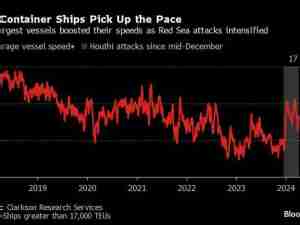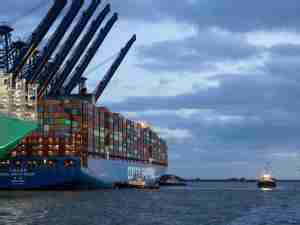On November 20 the governing boards of the ports of Los Angeles and Long Beach voted to approve the landmark San Pedro Bay Ports Clean Air Action Plan, the most comprehensive strategy to cut air pollution and reduce health risks ever produced for a global seaport complex.
The Plan was approved by the Port of Long Beach Board of Harbor Commissioners and the Port of Los Angeles Board of Harbor Commissioners in a joint meeting at Long Beach City Hall. In moving ahead with the plan, commissioners approved amendments directing staff to develop:
- A truck replacement program to phase out all 'dirty' diesel trucks from the ports in five years, replaced with a new generation of clean or retrofitted vehicles and driven by people who earn at least the prevailing wage.
- Aggressive milestones with measurable goals for air quality improvements.
- Recommendations to eliminate emissions of ultra-fine particulates.
- A technology advancement program to reduce green house gases.
- A public participation process with environmental organizations and the business communities.
The historic vote commits the ports to an aggressive plan to reduce pollution by at least 45% in the next five years. The $2-billion Clean Air Action Plan addresses all port-related emission sources -- ships, trains, trucks, terminal equipment and harbor craft -- to significantly reduce health risks posed by air pollution.
The five-year Clean Air Action Plan was created with the cooperation and participation of the South Coast Air Quality Management District, California Air Resources Board and US Environmental Protection Agency.
The Plan includes hundreds of millions of dollars of investments by the two ports for air quality programs, extensive use of ship-to-shore electricity at the ports within five years, a commitment to use pollution-based impact fees pollution-based impact fees so that polluters pay their part to improve air quality.
Emission reductions
Even as trade grows at the two ports, the Plan aims to cut diesel-related particulate matter (PM) pollution by more than 47% and smog forming nitrogen oxide (NOx) emissions by more than 45% within the next five years, resulting in emissions that will be below 2001 levels. Measures under the Plan also will result in reductions of sulfur oxides (SOx) by more than 52%. NOx is a precursor of smog; SOx contributes to particulate matter; and PM has been shown to lead to health problems.
The Clean Air Action Plan was released for public review and comment in June 2006. Dozens of individuals and groups submitted more than 500 pages of written comments and testified at four public meetings. The revised Action Plan was released in early November with significant changes based on public input. In the final action plan, the ports developed commitments and milestones for achieving air emission reductions and have committed to use pollution-based impact fees so that polluters pay their part to improve air quality.
The ports agreed to develop tariff-based incentives and requirements, such as vessel speed reduction incentives and port-mandated fuel requirements, to curb harmful air emissions, and committed to work with the air quality regulatory agencies (AQMD, CARB and EPA) to establish San Pedro Bay air quality standards, as well as mechanisms for tracking improvements in air quality.
The Plan commits the ports to invest hundreds of millions of dollars in air quality improvement programs, along with the local air district, the state, and port-related industry.
Under the Plan the ports will to eliminate 'dirty' diesel trucks from San Pedro Bay cargo terminals within five years by helping to finance a new generation of clean or retrofitted vehicles.
The Plan also calls for all major container cargo and cruise ship terminals at the ports to be equipped with shore-side electricity within five to ten








